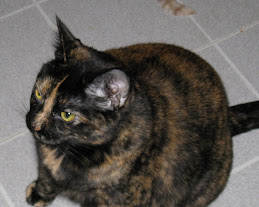
As I am in incredible pain from an abscessed tooth, anesthesia and pain relief are utmost and foremost on my mind at this moment. Here are some facts about the history of pain relief:
1. The term anesthesia was coined by Oliver Wendell Holmes in 1846 and is defined as a reversible lack of awareness either total or specific to a certain part of the body.
2. The first recorded use of anesthesia was written on a papyrus dating back to 1500 BC. Then, opium poppy capsules were collected and a preparation was made to relieve pain.
3. Classic Greek and Roman medical texts discussed the use of opium and other herbal specimens, which proved a mainstay of pain relief until the 19th century.
4. Most anesthesia preparations were either ingested or smoked, but Incan shamans chewed coca leaves and spit into the wounds they were operating on to relieve the pain.
5. The crucial drawback to old methods were that there was no standarization and opiates, herbal remedies and even alcohol were "useless when too weak and deadly when too strong."
6. Even in ancient times, as often as possible, pain relievers were administered locally to reduce the risk of overdosing the patient.
7. A medicine containing willow leaves (a salicylate, the precursor of aspirin) was often applied to wounds to decrease inflammation.
8. In the late 1700's - early 1800's, doctors began experimenting with CO2 and nitrous oxide (laughing gas). It was mainly used by dentists to ease the pain of tooth extraction.
9. In January 1842, a dentist named William E. Clark used a compound called diethyl ether (originally discovered in 1510) to perform painless tooth extraction.
10. Ether and chloroform were used, but both are unstable and ether proved highly flammable. Because of this, cocaine was suggested as an alternate method of pain relief by Sigmund Freud. He originally suggested it to Dr. Karl Koller in 1884 to use during eye surgery on a patient.
11. The first public demonstration of the use of ether as an anesthetic agent was done at Massachusetts General Hospital by the dentist Dr. William Thomas Green Morton in October 1846. In a letter to Dr. Morton, Oliver Wendell Holmes sited the term anesthesia and Morton eventually patented the ether compound. which was still in use through the 1960's.
12. Eventually, a number of cocaine derivatives and safer replacements were soon produced, including procaine in 1905 and lidocaine in 1943.
13. Opiates continue to be used for pain relief, but are usually used with other agents such as intravenous non-opiate anesthetics or inhalants to produce unconsciousness for surgical patients.
Viva anesthesia!!!
Showing posts with label Anesthesia. Show all posts
Showing posts with label Anesthesia. Show all posts
Wednesday, November 14, 2007
Thursday Thirteen #17!
Posted by Karen at 7:14 PM 17 comments
Labels: Anesthesia, History, Medicine, Thursday Thirteen
Subscribe to:
Posts (Atom)










